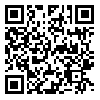Fri, Sep 12, 2025
[Archive]
Volume 20, Issue 2 (June 2024)
IJEEE 2024, 20(2): 85-96 |
Back to browse issues page
Download citation:
BibTeX | RIS | EndNote | Medlars | ProCite | Reference Manager | RefWorks
Send citation to:



BibTeX | RIS | EndNote | Medlars | ProCite | Reference Manager | RefWorks
Send citation to:
Sen B, Kashyap M, Tamang J S, Sharma S, Dey R. Comparative Analysis of Machine Learning Techniques for Arrhythmia Detection. IJEEE 2024; 20 (2) :85-96
URL: http://ijeee.iust.ac.ir/article-1-3235-en.html
URL: http://ijeee.iust.ac.ir/article-1-3235-en.html
Abstract: (2379 Views)
Cardiovascular arrhythmia is indeed one of the most prevalent cardiac issues globally. In this paper, the primary objective was to develop and evaluate an automated classification system. This system utilizes a comprehensive database of electro- cardiogram (ECG) data, with a particular focus on improving the detection of minority arrhythmia classes.
In this study, the focus was on investigating the performance of three different supervised machine learning models in the context of arrhythmia detection. These models included Support Vector Machine (SVM), Logistic Regression (LR) and Random Forest (RF). An analysis was conducted using real inter-patient electrocardiogram (ECG) records, which is a more realistic scenario in a clinical environment where ECG data comes from various patients.
The study evaluated the models’ performances based on four important metrics: accuracy, precision, recall, and f1-score. After thorough experimentation, the results highlighted that the Random Forest (RF) classifier outperformed the other methods in all of the metrics used in the experiments. This classifier achieved an impressive accuracy of 0.94, indicating its effectiveness in accurately detecting arrhythmia in diverse ECG signals collected from different patients.
In this study, the focus was on investigating the performance of three different supervised machine learning models in the context of arrhythmia detection. These models included Support Vector Machine (SVM), Logistic Regression (LR) and Random Forest (RF). An analysis was conducted using real inter-patient electrocardiogram (ECG) records, which is a more realistic scenario in a clinical environment where ECG data comes from various patients.
The study evaluated the models’ performances based on four important metrics: accuracy, precision, recall, and f1-score. After thorough experimentation, the results highlighted that the Random Forest (RF) classifier outperformed the other methods in all of the metrics used in the experiments. This classifier achieved an impressive accuracy of 0.94, indicating its effectiveness in accurately detecting arrhythmia in diverse ECG signals collected from different patients.
Keywords: Arrhythmia, Electrocardiography (ECG), Machine Learning, Support Vector Machine (SVM), Logistic Regression (LG), Random Forest (RF).
Type of Study: Research Paper |
Subject:
Biomedical Signal Processing
Received: 2024/03/11 | Revised: 2024/08/31 | Accepted: 2024/06/10
Received: 2024/03/11 | Revised: 2024/08/31 | Accepted: 2024/06/10
| Rights and permissions | |
 |
This work is licensed under a Creative Commons Attribution-NonCommercial 4.0 International License. |







